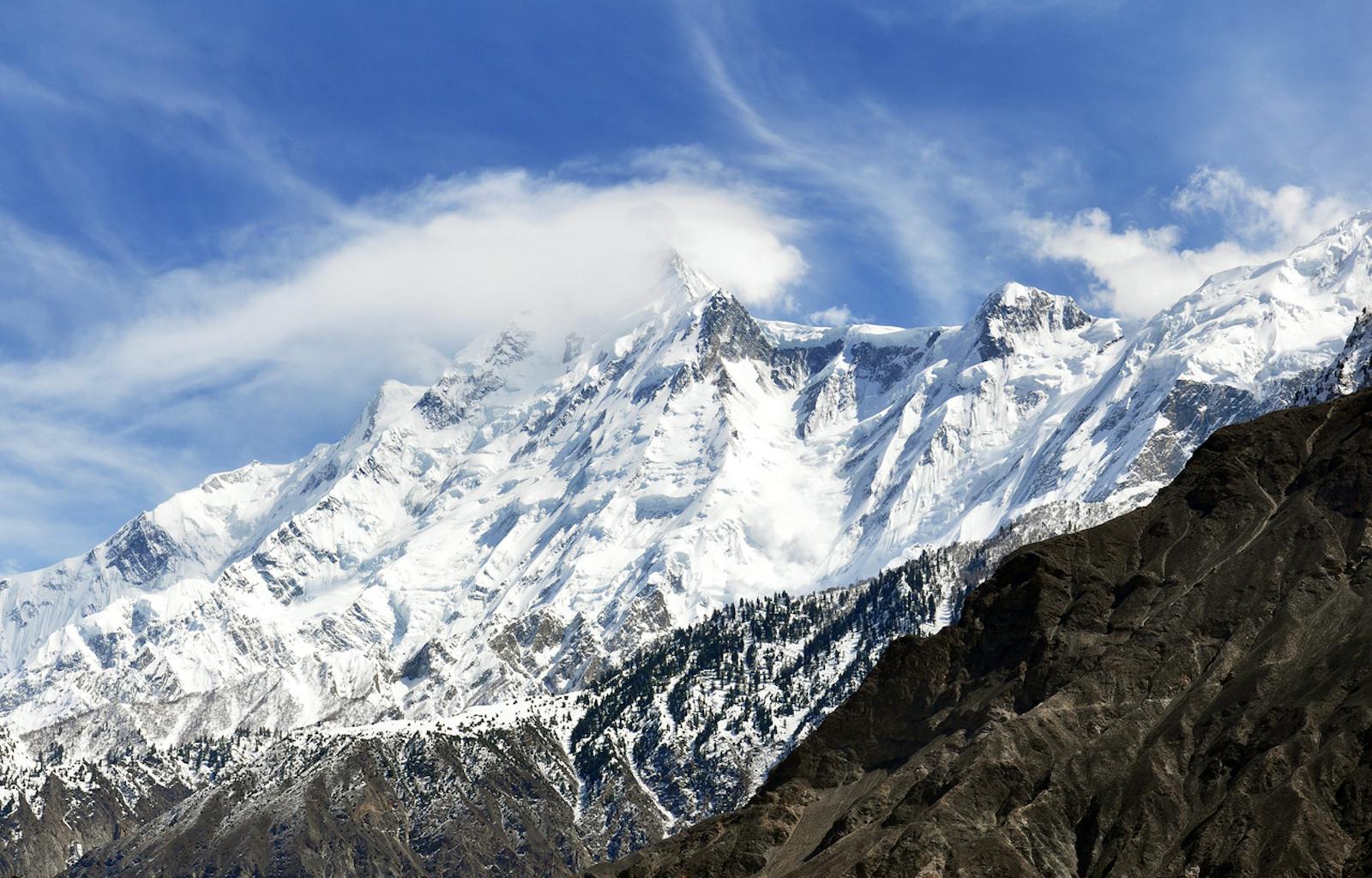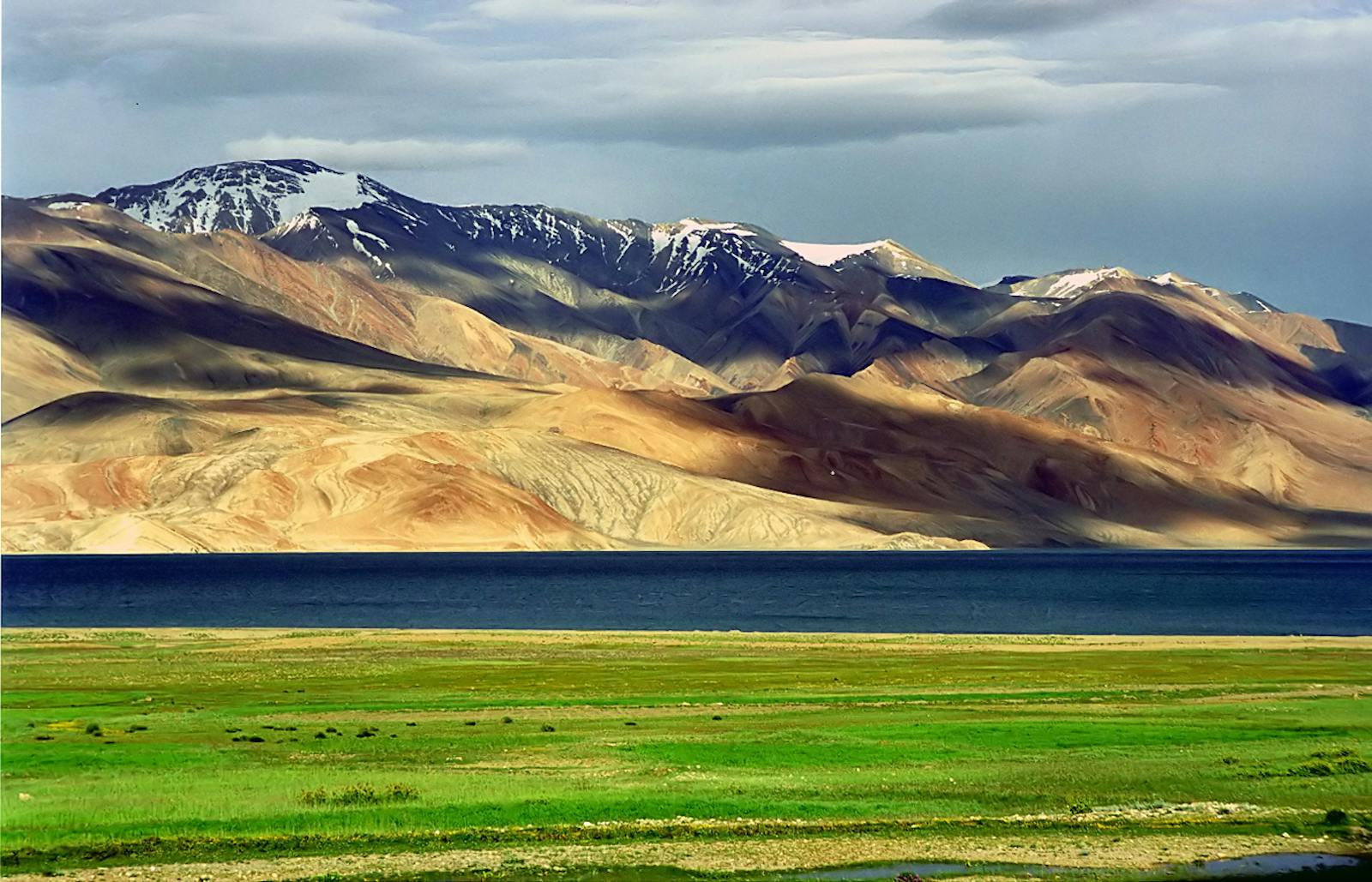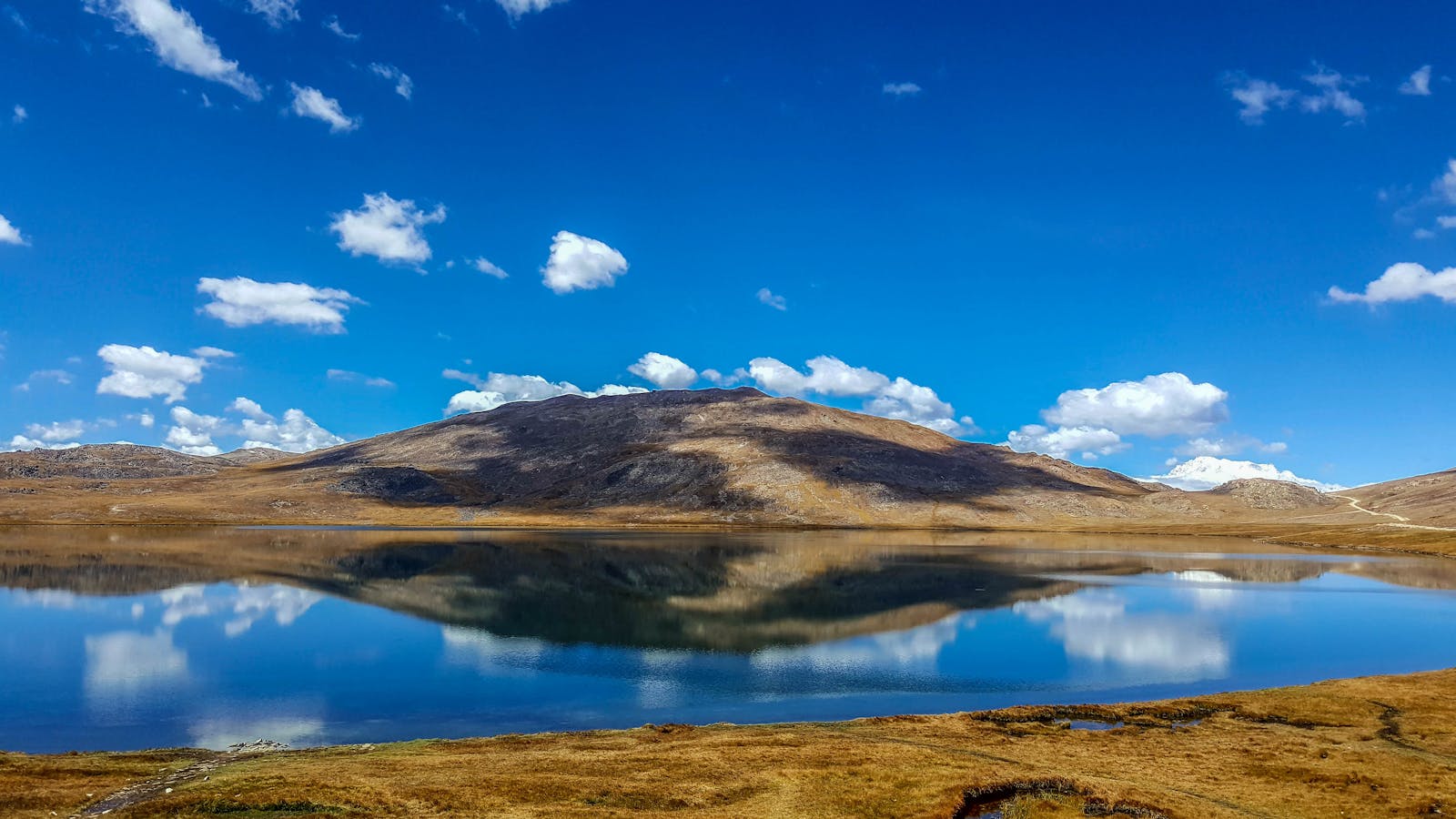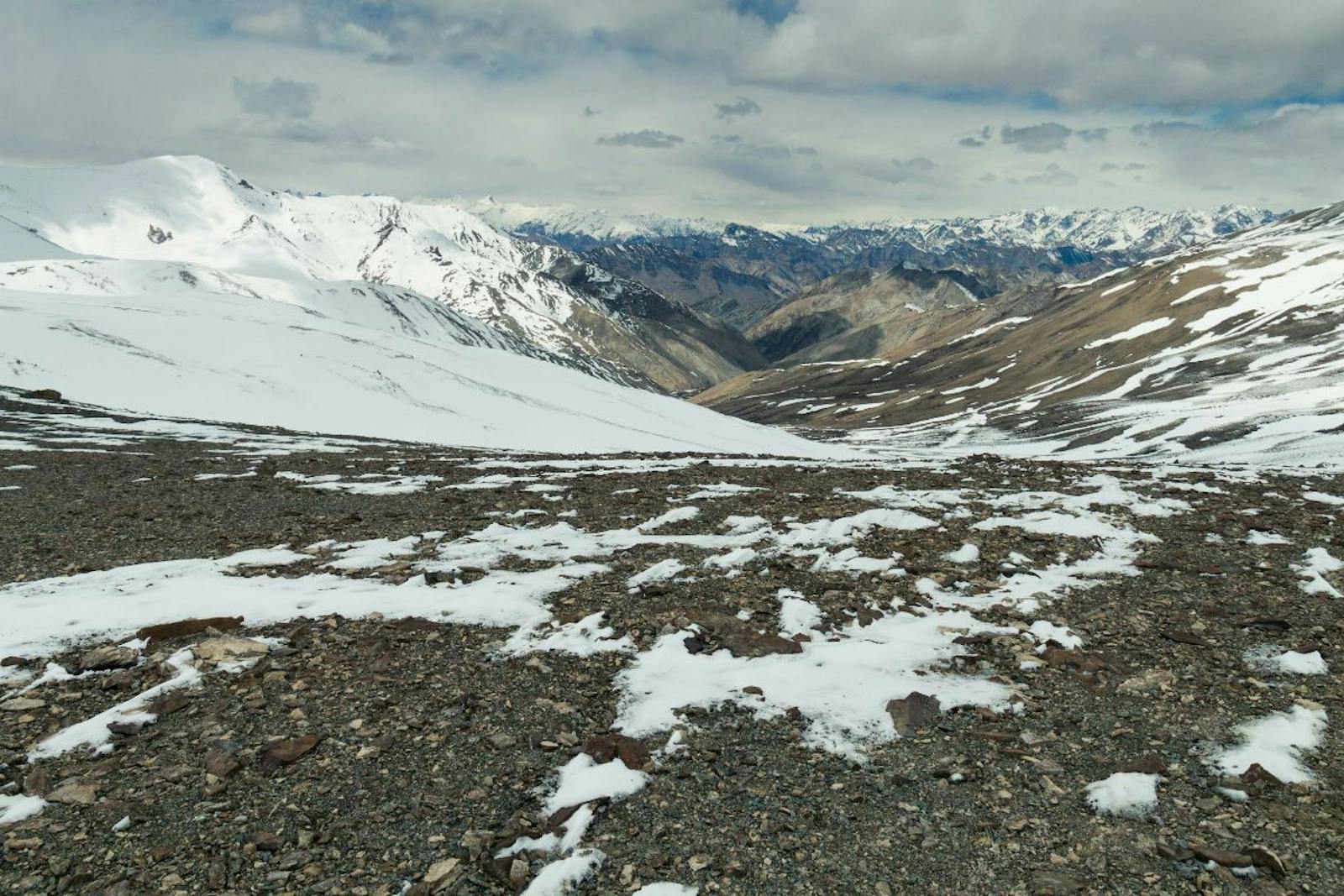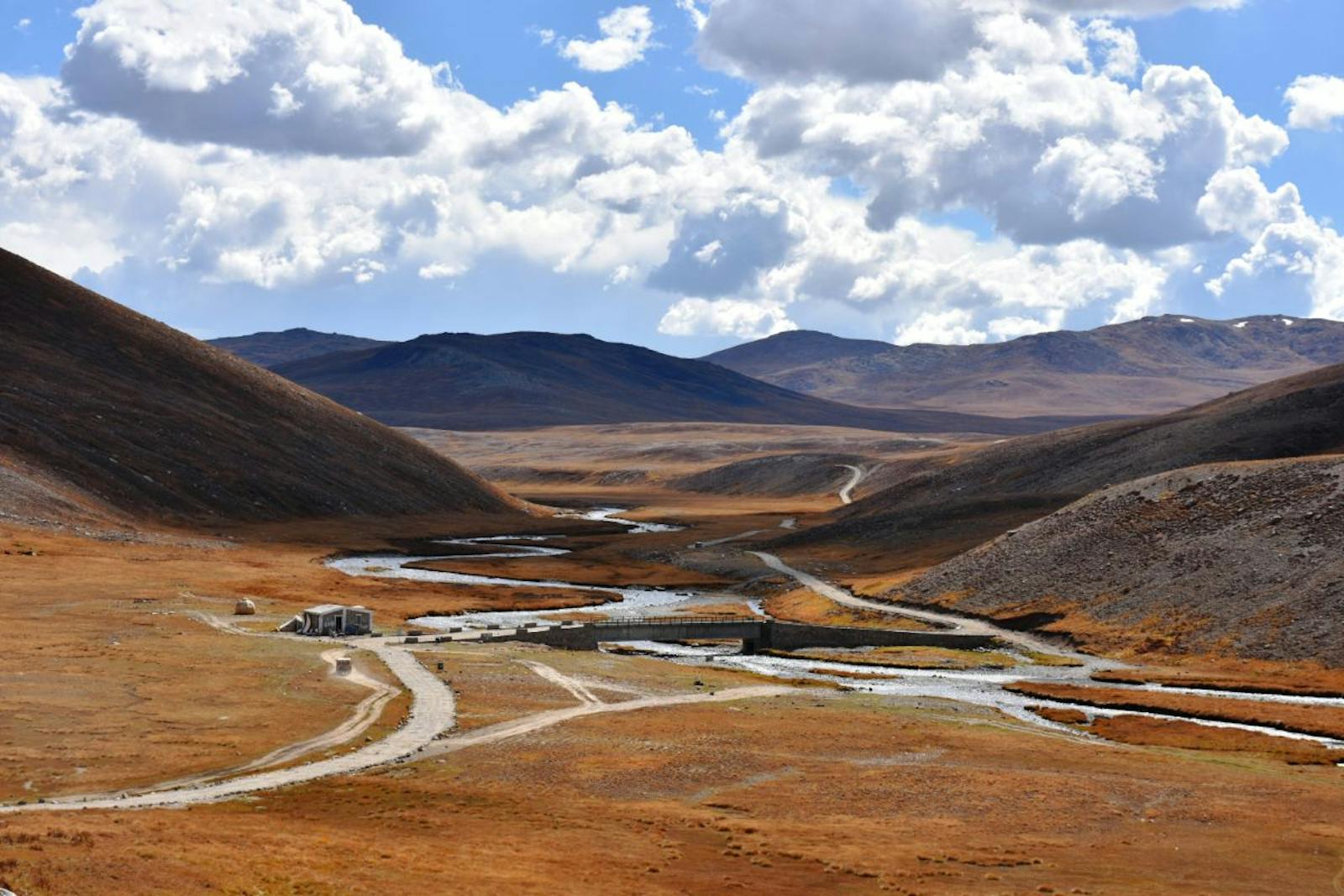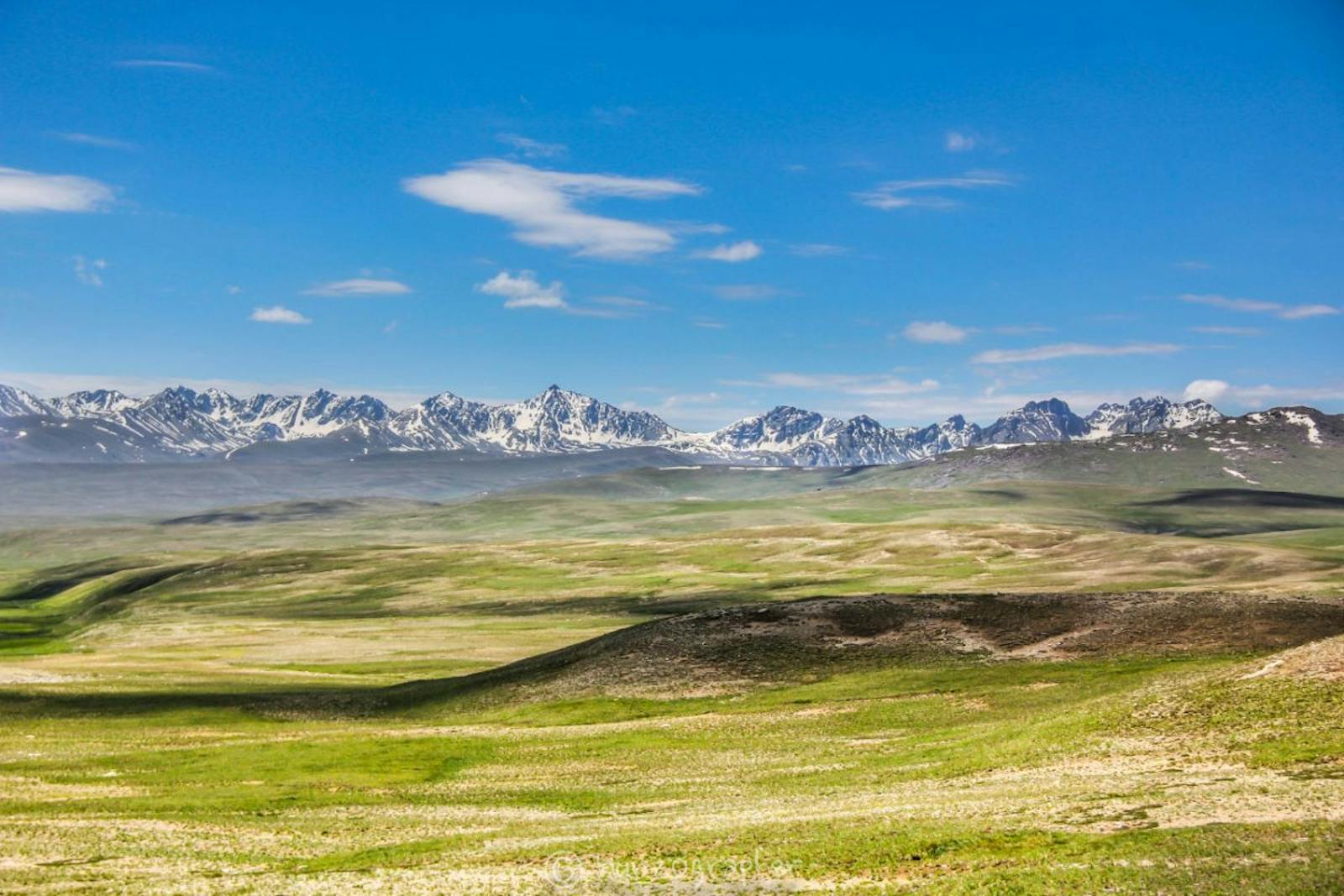Karakoram-West Tibetan Plateau Alpine Steppe
The ecoregion’s land area is provided in units of 1,000 hectares. The conservation target is the Global Safety Net (GSN1) area for the given ecoregion. The protection level indicates the percentage of the GSN goal that is currently protected on a scale of 0-10. N/A means data is not available at this time.
Bioregion: Himalayan-Pamir Alpine Shrub & Meadows (PA41)
Realm: Eastern Eurasia
Ecoregion Size (1000 ha):
14,360
Ecoregion ID:
754
Conservation Target:
34%
Protection Level:
5
States: Pakistan, India, China, Afghanistan, Tajikistan
The Karakoram-West Tibetan Plateau Alpine Steppe ecoregion lies within the catchment of the upper Indus River where it is shadowed from rain by the Karakoram and the northwestern Himalayan mountain ranges. The northern part, where the Indus River leaves the Tibetan Plateau to cut between the Himalaya and the Karakoram, exhibits tremendous topographic relief: river channels lower than 2,000 m elevation are separated by mountain massifs of 8,000 m elevation and more. The southern part lies on the Tibet Plateau where valleys are broader and the intervening ridges are not quite so steep.
The flagship species of the Karakoram-West Tibetan Plateau Alpine Steppe ecoregion is the woolly flying squirrel.
This southern part of the ecoregion supports a range of alpine habitats defined as steppe because they are generally too dry to support closed-cover meadow vegetation. Shrubby riparian habitat also occurs here. Mean annual precipitation, derived from winter westerly storms and (increasingly) from summer thunderstorms, ranges from 200 to 900 mm.
Valley bottom stream banks support dense thickets of sea buckthorn, willow, tamarisk, wild rose, and other woody plants. Mountain slopes above 3,000 m elevation have a sparse cover of Stipa and Festuca grasses and forbs, with sedge bogs in places where water comes to the surface. Steppe juniper forest, once widespread, persists as relict populations in less accessible places. Specialist plants of the highest elevations, above 4,500 m, include the showy larkspur Delphinium cashmerianum, Silene, and several hardy members of the mint family.
Alpine steppes of the Karakoram and West Tibetan Plateau support snow leopard, which prey on two wild goat and three wild sheep species, all relatively abundant here. The two goat species are Asiatic ibex and markhor, the three sheep are blue sheep, urial, and argali. Among the sheep species, blue sheep is the most abundant, urial is endemic to the Indus and Shyok river valleys of Ladakh, and argali is represented by two subspecies, ‘Marco Polo’ (Ovis ammon polii) and ‘Tibetan’ (O. a. hodgsonii). To the credit of local residents and conservation managers, several of these ungulate species have recently been reclassified by IUCN to reflect less danger of imminent extinction, as hunting bans have led to population increases since the end of the 20th century.
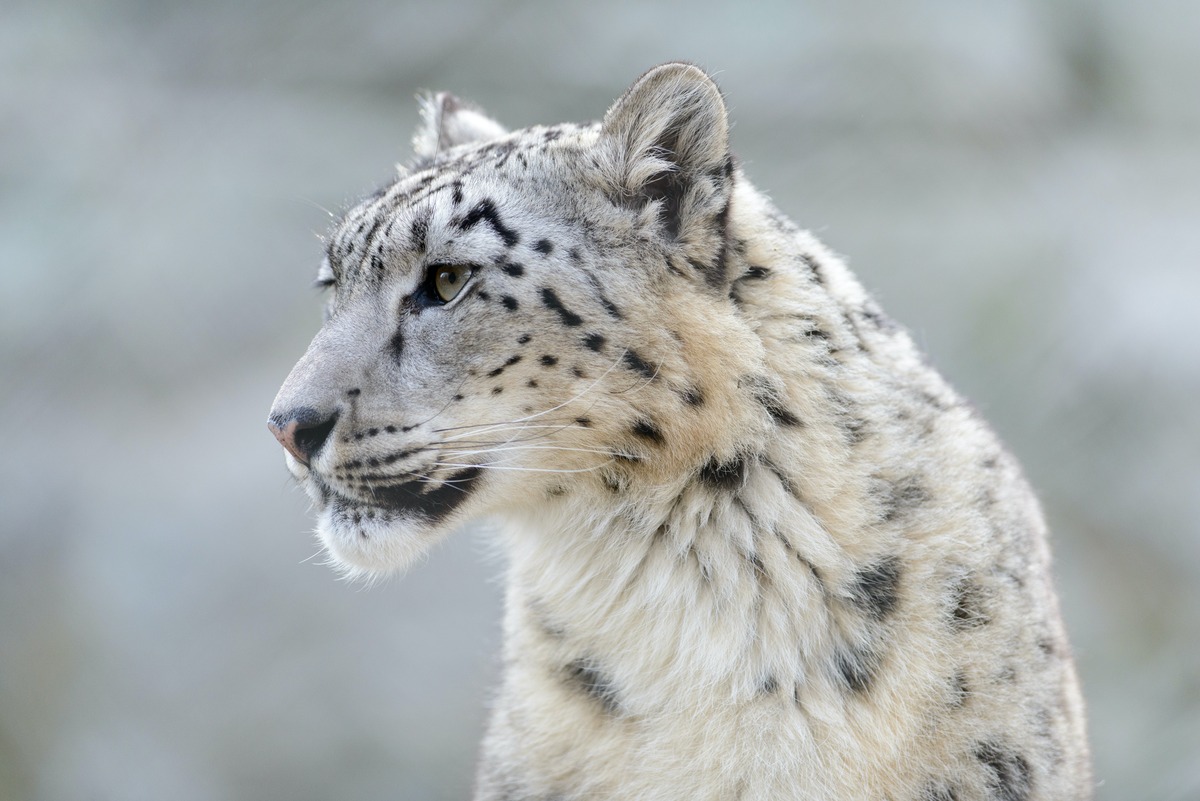
Snow leopard. Image credit: Eric Kilby, Creative Commons
Among small mammals, the woolly flying squirrel is of interest because it is endemic to stands of pine and spruce at the margins of this ecoregion. It can weigh more than 2.5 kg and is the largest mammal known to glide. Sensitive to deforestation and livestock grazing pressure, it was once thought to be extinct for 70 years until its recent rediscovery in 2004.
In Ladakh, which comprises a large part of this ecoregion, local people are disinclined to hunt, so wildlife tends to be more abundant and more apparent. Surveys during winter 2018 recorded 355 Ladakh urial, 633 blue sheep, 133 argali, and 278 kiang or Tibetan wild ass. Increases in the prey base, together with more effective predator-proofing of livestock, should reduce conflict between snow leopards and the local residents of Hemis National Park, Ladakh’s foremost protected area. The indirect monetary value of snow leopard is also becoming more apparent to the Ladakhi people. For example, Zanskar River offers one of the best opportunities for snow leopard ecotourism, a potentially lucrative enterprise that needs to be developed with ecological insight and restraint.

Markhor. Image credit: Creative Commons
In the late 20th century, protected areas of this ecoregion were said to lack consistency of purpose. However, management has evolved in recent years, with more effective outreach to local communities and steps toward best practices in ecotourism. Significant protected areas include Hemis High Altitude National Park, India (4,400 km2) with a high density of snow leopard and blue sheep; Khunjerab National Park, Pakistan (2,269 km2) with a large Asiatic ibex population; Deosai National Park, Pakistan (3,000 km2), which protects a grassland steppe-meadow with brown bear and snow leopard at 4,100 m elevation; and, a slice of Taxkorgan Nature Reserve, China. Constructive trans-boundary conservation remains a dream for the future of this politically conflicted ecoregion.
The main threats to this ecoregion include livestock-predator conflict, transboundary political volatility impeding regional conservation effort, unregulated trophy-hunting, and potential overgrazing. Climate change might be a threat as the limited glacier cover is shrinking.
The priority conservation actions for the next decade are to: 1) support best practices of predator-proof livestock ranching with enclosures and better supervision; 2) manage ecotourism for snow leopard, including possible limited trophy-hunting of prey-base ungulates; and 3) work towards effective trans-boundary conservation and consistent management among the various protected areas.
Citations
- Chandola S. 2012. An assessment of Human-wildlife interaction in the Indus valley, Ladakh, Trans-Himalaya (Doctoral dissertation, Saurashtra University).
- Ghoshal, A. 2018. Understanding distribution, population density and conservation status of the endemic and threatened Ladakh urial Ovis orientalis vignei. First Quarterly Report. Nature Conservation Foundation, Karnataka, India.
- Loucks, C. 2000. Indian Subcontinent: Pakistan, China, Afghanistan, India. https://www.worldwildlife.org/ecoregions/pa1006. Accessed December 2018.
